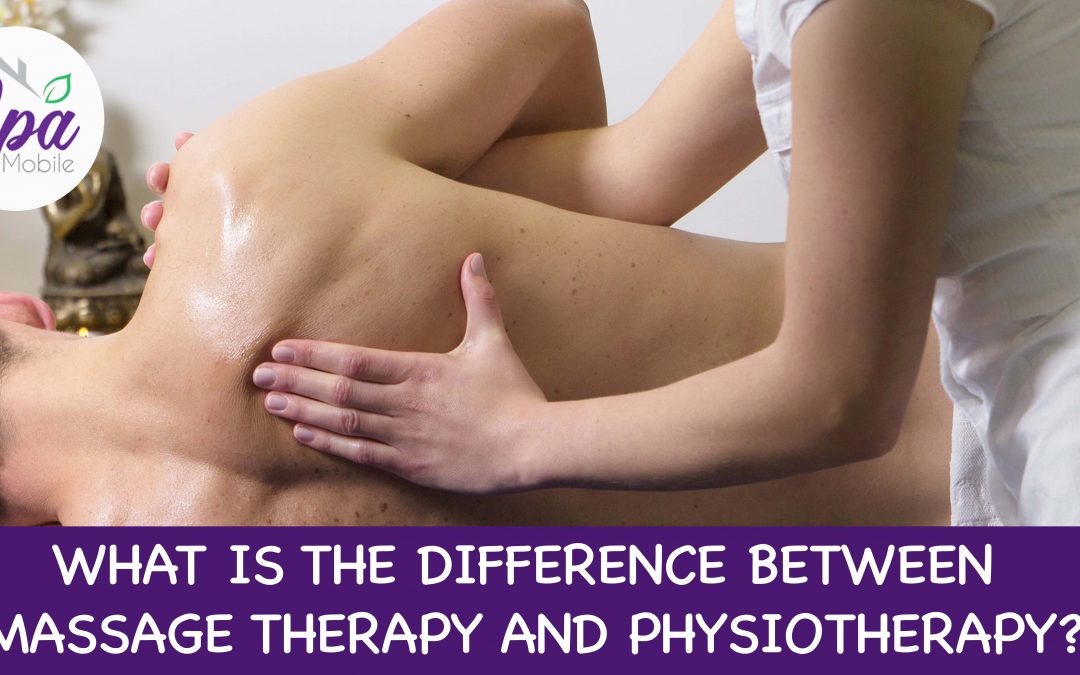Have you ever suffered from pain or discomfort and weren’t sure whether you needed physiotherapy or massage therapy?
When you are in pain, you know how difficult it can be to make an informed decision about which healthcare professional to choose.
The good news is that the answer is already within you, depending on your current condition and what you desire.
What are the first questions to ask yourself?
Physiotherapy and massage therapy can help you manage your pain. Still, massage therapy is commonly used for immediate pain relief and muscle spasms. In contrast, physiotherapy is geared more towards rehabilitating an area’s muscle and joint functions—data of your body.
If you are considering massage therapy or physiotherapy treatment for the discomfort you are experiencing, here are some questions that can help you choose between the two:
- Do I know the cause of the pain?
- Have I ever suffered from pain, and what treatment has worked before?
- Is stress contributing to my current problem?
- What do I want to achieve with the treatment?
- Is it better flexibility, reduced pain, or a return to sport?
Click to enlarge
Physiotherapy
Physiotherapists work more focused with patients who are typically recovering from an accident, injury, or any physical condition that results in pain, restriction of movement, and impaired mobility. They use various techniques to help patients quickly regain their full function.
They often work in outpatient clinics and hospitals.
If you are unsure of the cause of your pain or how to treat a particular injury, physical therapy would be recommended. Physical therapists have a detailed understanding of how the body moves and functions. Using this knowledge and the information gained from a thorough verbal and physical assessment, they provide a diagnosis that guides you through the treatment process.
Physiotherapists can refer clients to diagnostic procedures such as X-rays.
A typical physiotherapy session includes assessment, bodywork, ice, ultrasound machines, and corrective exercise therapy. Hydrotherapy, gym rehabilitation, and performance monitoring can also be used.
Physiotherapists can treat acute and chronic injuries. It is not uncommon for a physiotherapist to see two or three patients simultaneously. Therefore, you may encounter times during your physiotherapy session when the therapist does not treat you formally.
As a general rule, if you are suffering from an acute injury or need a firm diagnosis of your condition, it is probably best that you first contact a physiotherapist. Still, it may be that massage therapy becomes more relevant to your treatment after a few sessions.
Massage therapy
Massage therapists are good at using practices to treat muscle-related issues. They work holistically, specializing in specific treatments but focusing on your whole mind and body.
Most of their patients are relatively healthy people looking to improve their general well-being and relieve stress.
Some massage therapists work in spas, while others specialize in helping older people. They also advise on posture, ergonomics, and how to stay healthy.
Sessions typically last around an hour. The massage therapist uses their hands, fingers, joints, elbows, and forearms to manipulate the body’s soft tissues (muscles, tendons, ligaments, and connective tissue/fascia).
While most massage sessions have a direct therapeutic goal, for many people, an added benefit is that while the massage can be a bit painful and intense, it still provides some degree of relaxation.
If you know your problem is tight muscles or stress, effective massage can help relieve tension, reduce pain, and improve mobility. If stress contributes to your pain or causes mental frustration, massage therapists can help provide physical relaxation and time for mental relaxation.
Massage therapists can use various techniques, including deep tissue massage, trigger point work, stretching, myofascial release and acupressure point stimulation, to help relieve pain, decrease muscle tension and restore balance to the body.
Massage therapists do not do any manipulation, and to distinguish themselves from physiotherapists, they do not have sufficient training to be considered diagnostic practitioners. If you are looking for a firm diagnosis of any condition, you must see someone other than a massage therapist.
Physiotherapists and massage therapists can prescribe stretches, strengthening, and postural and balance exercises.
Massage therapy may be appropriate if your condition is more general and chronic, such as a stiff neck or persistent shoulder or lower back pain. This is especially the case if you want a more holistic approach, with the massage therapist dedicating their time to your whole body rather than a session devoted to treating pain in your left forearm.
What are the main differences between massage therapy and physiotherapy?
Massage therapists typically do not provide primary care for injuries, although they can help as part of an overall treatment plan.
Another key difference is that massage therapists can work with a patient their entire life, while physiotherapists try to get their skills certificates so they can move on. This is reflected in their training.
Massage therapists learn different techniques to treat the physical body and the mind. This is why massage therapy is a good treatment for stress and certain forms of depression. Although they are trained in anatomy and physiology, it is not as in-depth as physiotherapy.
Physiotherapists learn to solve problems in a particular body area, such as the lower spine. Their goal is to restore function, to get a patient back on track or an athlete on the court as quickly as possible.
Physiotherapy requires a medical prescription, unlike massage therapy.
Many patients benefit from both areas at different times or in conjunction.
Some quick reasons to choose physiotherapy:
- You don’t know what’s causing your pain
- You know the cause of your pain, and it is not related to the muscles
- You are injured, and you want to resume sport
- The massage worked at first, but the problem kept recurring
- You experience pain or lack of movement as a result of an activity.
- You have had surgery and need rehabilitation.
- You want to integrate more physical activity into your life to move more.
- You want to learn how to prevent injury.
Some quick reasons to choose massage therapy:
- Your problem seems to be related to muscle tension
- You’ve been very stressed out lately
- You experience general pain after exercising
- You feel stiff and want to be more flexible
- You want relief from muscle and joint pain.
- You need to relax because of the lack of t “me time.”
- You want to improve your body posture.
- Tired and overworked muscles that need to decompress.
I hope this information has helped you understand the difference between physiotherapists and massage therapists. If you have any further questions or are still unsure what you need to get moving again, please don’t hesitate to contact us!
Choose massage therapists who are attentive to your situation.
If you want a unique massage to relax or free yourself from pain, discomfort, or suffering, isn’t it wise and sensible to turn to massage therapists who know what they are doing? Live?
Massage therapy
Massage therapy
Massage therapy





